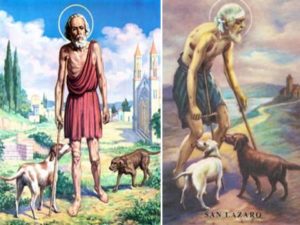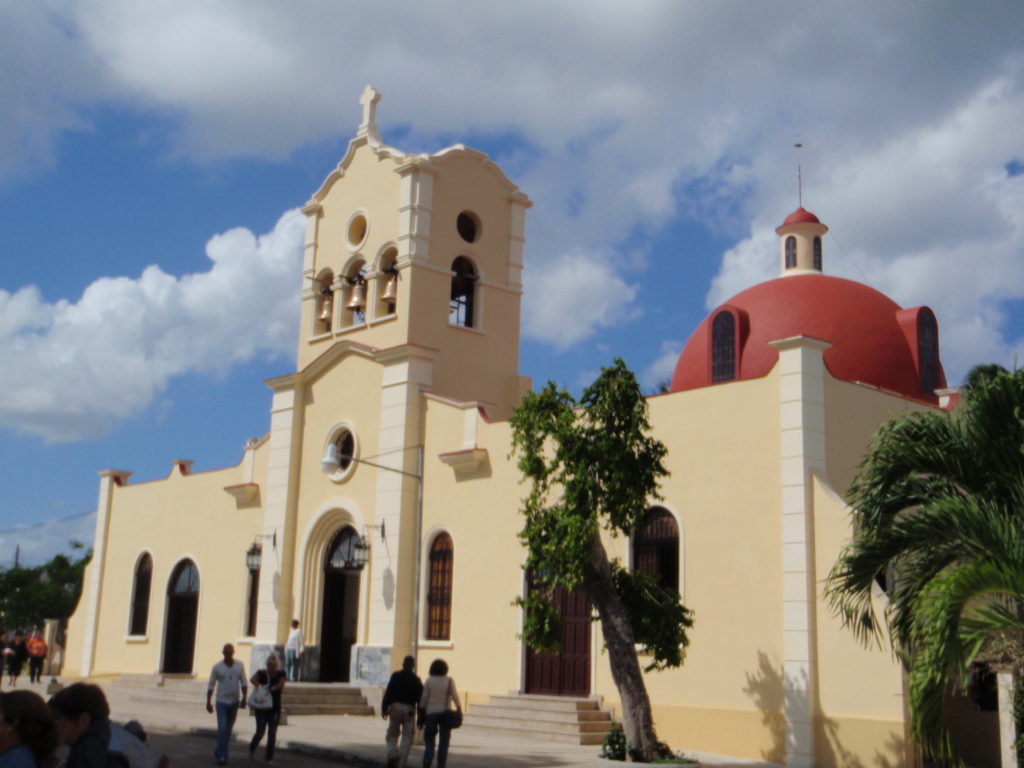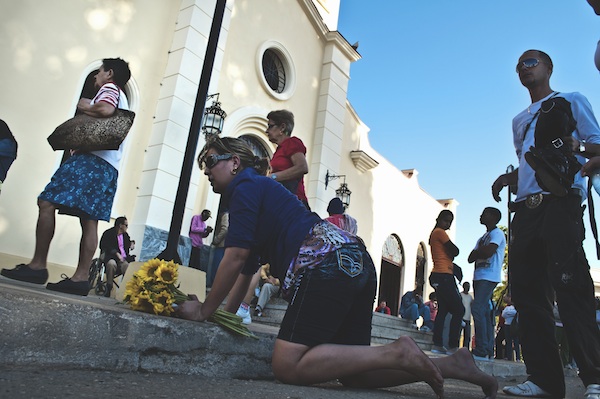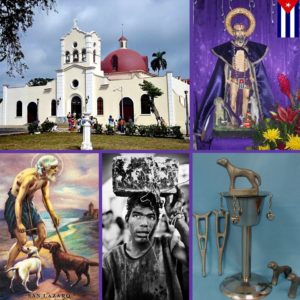 SAINT LÁZARO, EL “VIEJO LÁZARO”, A SIMILARITY WITH THE CUBAN PEOPLE.
SAINT LÁZARO, EL “VIEJO LÁZARO”, A SIMILARITY WITH THE CUBAN PEOPLE.
Can a saint unite Catholics, Yorubas, laity, agnostics, emigrants and residents, revolutionaries and opponents? In Havana, the new chapel to the “Old Lazaro” shows the acceptance of the Church and the officiality of a key faith in national reconciliation.
The Church brought to Cuba the image of Saint Lazarus of Bethany, resurrected by Jesus and who presumably became a bishop. Still in the temples.
But the Bible also tells the story of another Lazarus, a leprous beggar, with crutches, accompanied by dogs, hungry and that when he died he went to heaven. With Andalusians and Canary Islands, his image and the term “Lazareto” -popular in Spain, France and Italy- came to Cuba, which referred to the sanatoriums of lepers.
Meanwhile, the African slaves contributed to Babalú Ayé, a Yoruba king punished with skin diseases for his libertine life, who became an orisha (god) by doing penance and dedicating himself to doing good. They are credited with healing miracles.
“This San Lázaro (Cuban), this popular devotion, so dear to us in Cuba, I would say is a very interesting synthesis of (those) three figures,” Armando González, of the Museum of Guanabacoa, told AFP. Afro-Cuban traditions-, professor at the Padre Félix Varela Catholic Institute. “Product of that synthesis has created this figure so characteristic of Cuban popular religiosity, which we call the” Old Lazaro “, he says.
He took from the bishop his purple color and the day of his feast, December 17. From the leprous beggar, his helpless image. Babalú Ayé his healing powers and severity to punish “with embolisms and gangrene” those who break promises.
The “Old” chapel
The “Old Lazaro” was never admitted to Catholic temples and was marginalized during three decades of socialist atheism (1961-90).
Today his chapel is in the garden of the National Sanctuary of San Lazaro, a leprosarium of the early twentieth century became a Catholic temple and place of pilgrimage about 20km from the center of the capital. The image is escorted by flags of countries where Cubans reside, including the United States. Around 10,000 people arrive on weekends and over 80,000 on December 17, the young priest Elixander Torres (33), rector of the Shrine, told AFP.
Although the Church as such does not accept the “Old Man” as a saint, the specialist believes that Gonzalez “is recognizing that popular devotion must be respected and in some way taken into account. Pope John Paul II in January 1998 offered his homily there during his visit to Cuba. It is a place visited by authorities, which since then maintains cordial relations with the Church.
“San Lázaro is a bridge between cultures, religions (…) it is a bridge that we can not discard and we must use to evangelize, to attract the faithful,” said Torres, promoter of the chapel.
Despite the reluctance of “a minimal part of the clergy”, Torres also believes that “the times change, the language changes and of course the Church also has to change”.
Almost simultaneously with the chapel of Lazaro, the Afro-Cuban priest Silvano Pedroso became the first black bishop on the island in 500 years, in a country of high miscegenation. Pope Francis gave him the jurisdiction of Guantánamo-Baracoa.
The thaw between Cuba and the United States began on December 17, 2014, the birthday of Francisco and the day of the feast of Lazaro, to whom many Cubans do not hesitate to attribute the miracle.
 SAN LÁZARO, “EL VIEJO LÁZARO”, UN SANTO A SEMEJANZA DEL PUEBLO CUBANO.
SAN LÁZARO, “EL VIEJO LÁZARO”, UN SANTO A SEMEJANZA DEL PUEBLO CUBANO.
¿Puede un santo unir a católicos, yorubas, laicos, agnósticos, emigrantes y residentes, revolucionarios y opositores? En La Habana, la nueva capilla al “Viejo Lázaro” evidencia la aceptación de la Iglesia y la oficialidad de una fe clave en la reconciliación nacional.
La Iglesia trajo a Cuba la imagen de San Lázaro de Betania, resucitado por Jesús y quien presumiblemente llegó a ser obispo. Aún sigue en los templos.
Pero la Biblia también cuenta la historia de otro Lázaro, un mendigo leproso, con muletas, acompañado por perros, hambriento y que al morir fue al cielo. Con andaluces y canarios llegó a Cuba su imagen y el término “Lazareto” -popular en España, Francia e Italia-, que aludía a los sanatorios de leprosos.
En tanto, los esclavos africanos aportaron a Babalú Ayé, un rey yoruba castigado con enfermedades de la piel por su vida libertina, que devino orisha (dios) al cumplir penitencia y dedicarse a hacer el bien. Se le atribuyen milagros curativos.
“Este San Lázaro (cubano), esta devoción tan popular, tan querida que tenemos en Cuba, diría que es una síntesis muy interesante de (esas) tres figuras”, explica a la AFP el especialista Armando González, del Museo de Guanabacoa -con tradiciones afrocubanas-, profesor del instituto católico Padre Félix Varela. “Producto de esa síntesis se ha creado esta figura tan característica de la religiosidad popular cubana, a la cual le llamamos el “Viejo Lázaro”, dice.
Tomó del obispo su color morado y el día de su festividad, 17 de diciembre. Del mendigo leproso, su imagen desvalida. De Babalú Ayé sus poderes curativos y la severidad al castigar “con embolias y gangrenas” a los incumplidores de promesas.
La capilla del “Viejo”
El “Viejo Lázaro” nunca fue admitido en templos católicos y fue marginado durante tres décadas de ateísmo socialista (1961-90).
Hoy su capilla está en el jardín del Santuario Nacional de San Lázaro, un leprosorio de inicios del siglo XX devenido templo católico y lugar de peregrinación a unos 20km del centro de la capital. La imagen está escoltada por banderas de países donde residen cubanos, entre ellas, de Estados Unidos. A él llegan unas 10.000 personas los fines de semana y más de 80.000 el 17 de diciembre, aseguró a la AFP el joven sacerdote Elixander Torres (33), rector del Santuario.
Pese a que la Iglesia como tal no acepta al “Viejo” como santo, el especialista González cree que igual “está reconociendo que esa devoción popular debe ser respetada y de alguna forma tenida en cuenta”. El papa Juan Pablo II en enero de 1998 ofreció allí su homilía durante su visita a Cuba. Es un lugar visitado por autoridades, que desde entonces mantiene cordiales relaciones con la Iglesia.
“San Lázaro es un puente entre culturas, religiones (…) es un puente que no podemos desechar y que debemos emplear para evangelizar, para atraer a los fieles”, dijo Torres, promotor de la capilla.
Pese a la reticencia de “una mínima parte del clero”, Torres cree también que “cambian los tiempos, cambia el lenguaje y por supuesto la Iglesia también tiene que cambiar”.
Casi en simultáneo con la capilla de Lázaro, el sacerdote afrocubano Silvano Pedroso se convirtió en el primer obispo negro en la isla en 500 años, en un país de alto mestizaje. El papa Francisco le entregó la jurisdicción de Guantánamo-Baracoa.
El deshielo entre Cuba y Estados Unidos inició el 17 de diciembre de 2014, cumpleaños de Francisco y día de la festividad de Lázaro, a quien muchos cubanos no dudan en atribuirle el milagro.
Agencies/AFP/Carlos Batista/Excerpts/Internet Photos/ Arnoldo Varona/ TheCubanHistory.com
THE CUBAN HISTORY, HOLLYWOOD.








